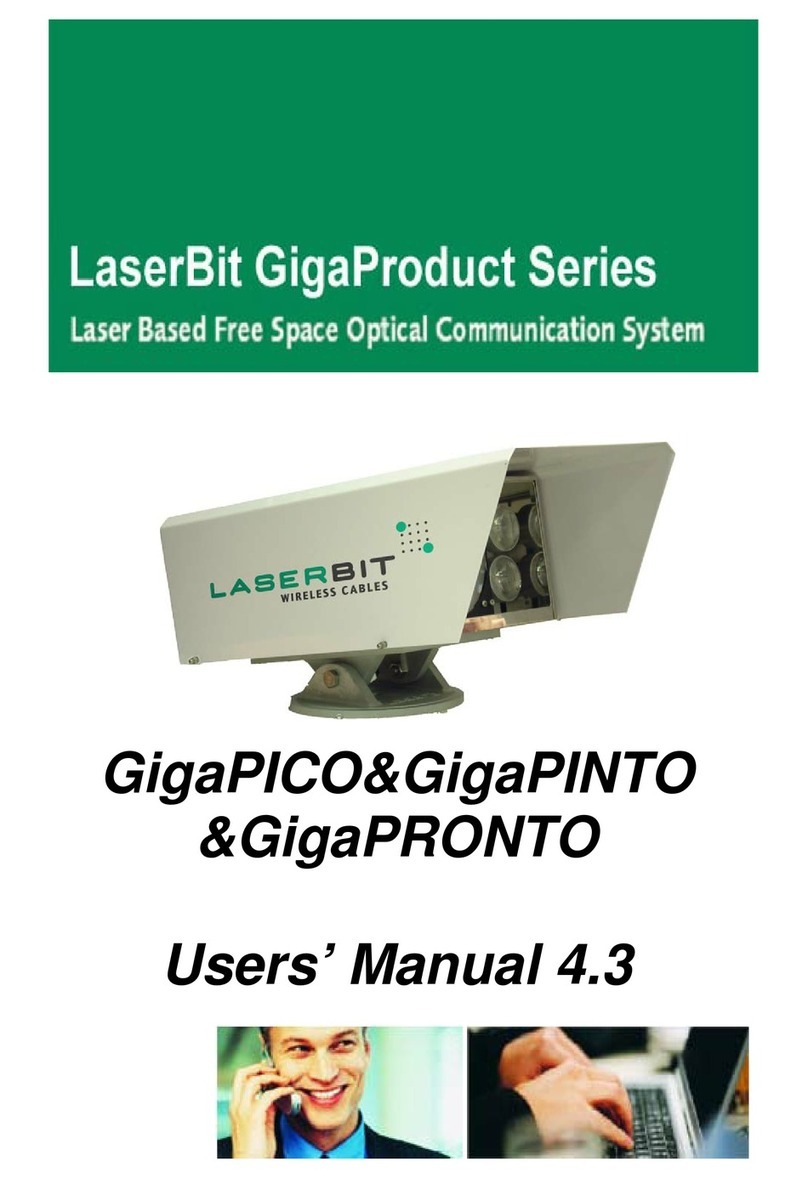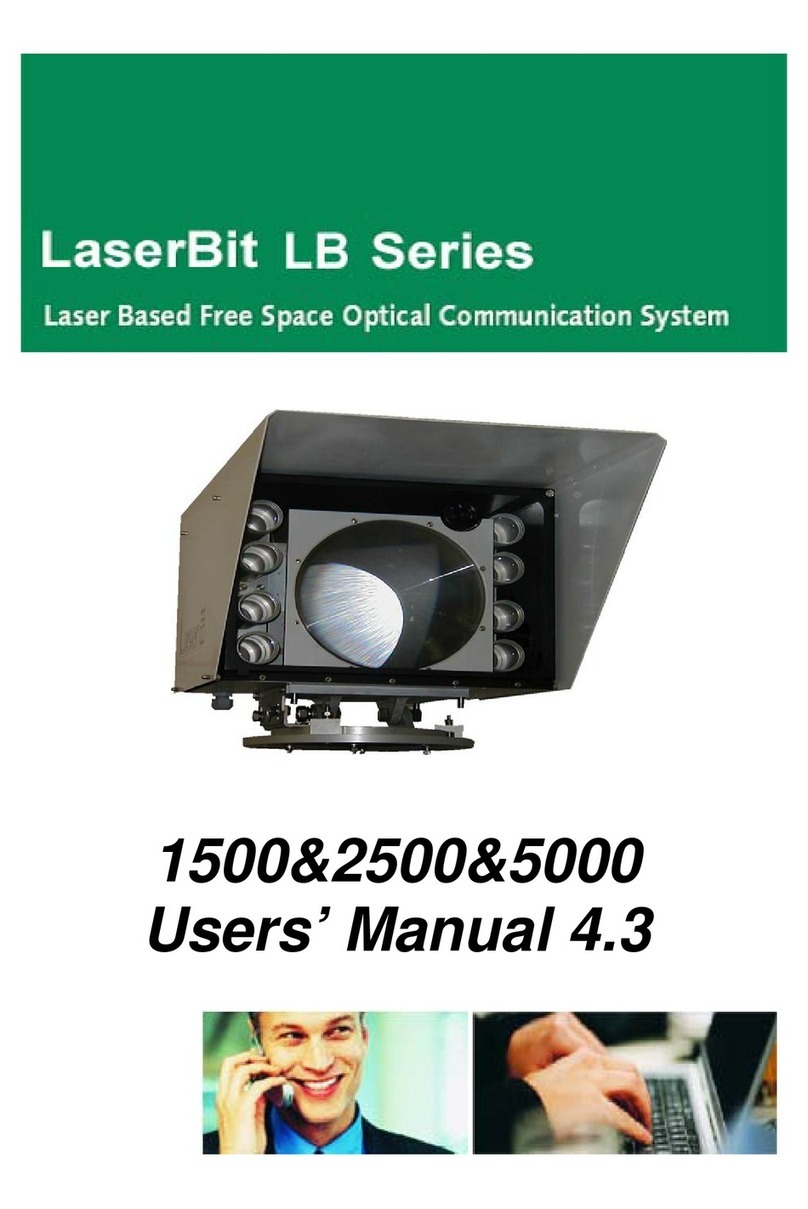
LaserBit PicoPlus Series 1.0 page
7
1.4 About Laserbit
Laserbit Communications Corporation was established in 1999, building on
ten years of research and development activities in the field of telecommunications.
The British-American-Hungarian joint venture was founded by two innovators Mr.
Bela Gyoeri and Mr. Janos Pallagi.
The profile of the firm is solely the
development of wireless
transmitting with laser beams.
They generated a whole R&D,
product, quality, and sales’
infrastructure, which gives that the
Laserbit can be named as a
very stable company of the
telecommunication market of the
world today.
After a few years the Laserbit Com. Co. became a worldwide company and now
it has numerous partners like USA, Canada, Germany, United Kingdom, Ireland,
Greece, Portugal, Switzerland, Spain, the Benelux-States, Turkish, Poland, Austria,
Brazil, Russia, and Singapore. In the other hand the expansion of markets and
partners in the Laserbit is keep going today which are helped with trainings, meetings
and other programs and a fine support community.
The purpose is to manufacture cost-effective and best quality products which are
simultaneously suitable for telecommunication standards and customers’ demands.
Together with Laserbit wants to earn bigger breakthroughs in the field of laser
communication with it can take a hand in the advance of the modern World.
2 LaserBit PICO PLUS series
The PICO PLUS series
products from Laserbit set a
new standard for Free Space
Optical transmission systems.
They provide simple and easy to
installation solution that is unique
in laser based networking. This
new range of products
incorporates a lightweight,
compact mechanical design with a factory-set optical system, which allows end-users
to benefit from simple and quick installation. The PICO PLUS is more competitively
priced than 2.4 GHz radio solutions and the bandwidth provided can be about ten
times higher.
Laserbit PICO PLUS range offers cost effective, reliable and secure laser based
free space optical transmission for local area networks (LAN) at full duplex Fast
Ethernet wire speed, or direct E1 connection with a standard G703 balanced or





























